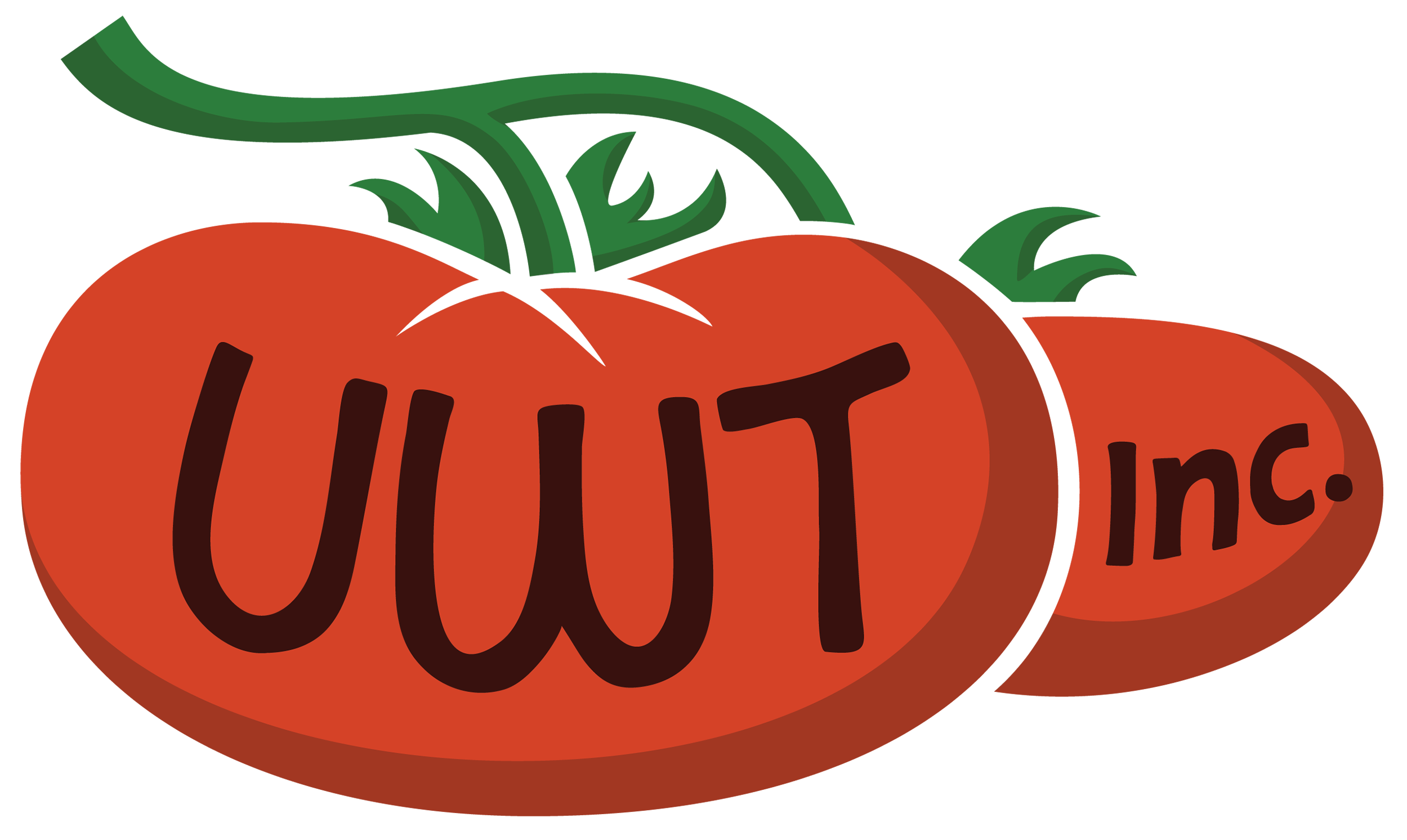Who We Are
Named after Carl’s late uncle, Uncle Waynes Tomatoes, Inc. is owned and operated by Carl & Kay Barney and Andrea Barney. We also enjoy and benefit from seasonal help from friends and other family members.
What We Offer
Our primary focus is on tomato and pepper plants. Our goal is to have 6 to 8 inch plants in 3.5 inch pots by the last week in April. Later in the year we may have some varieties in gallon pots. If we have time and energy afer getting the tomatoes and peppers ready we will have some cucumbers, summer squarsh, bazil and/or pumpkin plants also.
In addtition to plants, we offer growing aids – bone meal, lime, fertilizer, Wall-o-Water season extenders and square, folding plant cages.
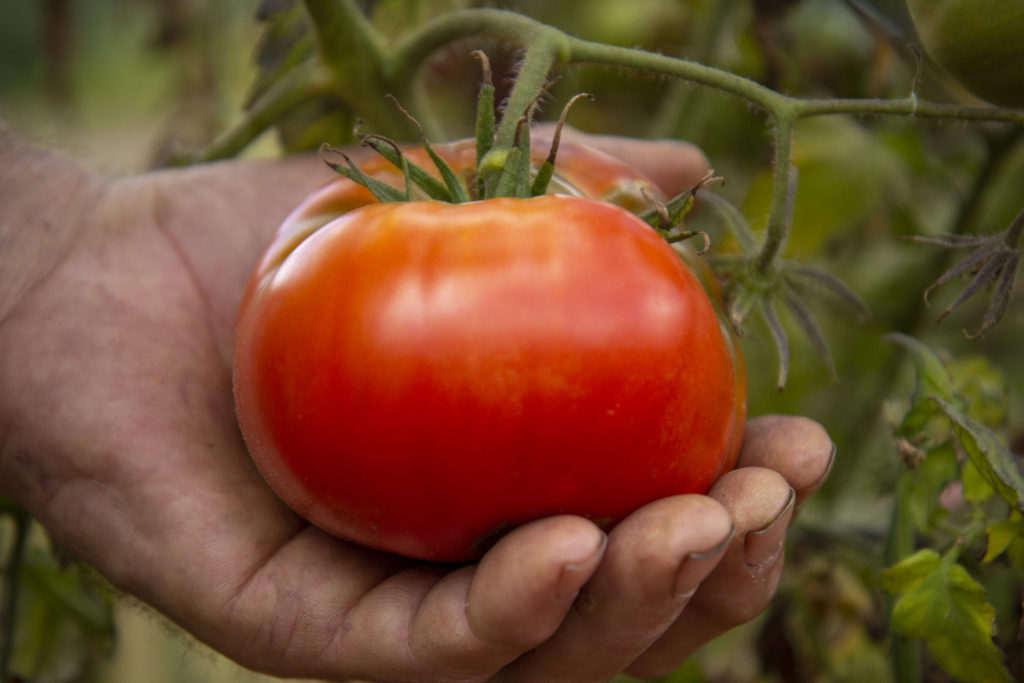
Our History
Summary
Carl D. Barney started growing tomato plants from seeds for his own amusment. To his amazement nearly every seed grew! In 1996 Uncle Wayne’s Tomatoes was registered with the State of Oregon. When it became a corporation in 2012, the state would not allow the apostrophe in the corporate name so it became Uncle Waynes Tomatoes, Inc.
Who Was Uncle Wayne?
The company was named after Carl’s late uncle, Wayne Barney. Uncle Wayne ran an auto repair shop from his 40 acre home on Swan Ave (off Holcomb Blvd.) in Oregon City. On most of his land he pastured cows, Shetland ponies and a mule. Across the “parking lot” in front of his shop he planted a large garden featuring what seemed to a young Carl like a couple hundred tomato plants. (His son and daughter-in-law tell me there were never more than 40 tomato plants.) No family member or friend came to visit Uncle Wayne in the summer without leaving with a trunk load of fresh vegetables.
Wayne was a member of the Holcomb Grange and decided he could help their annual fund raising event by growing and selling tomato starts. Rather than buy plastic pots, he asked his daughter-in-law, who worked at the grade school cafeteria, to rinse and save the small milk cartons. After cutting off the tops and poking a few holes in the bottoms he had his pots. Re-sourcing before the term was thought of!
Carl had the privilege of working on Uncle Wayne’s farm many summers. In those days, if you were on a farm at meal time you ate at the farm house. One of his favorite lunches was a mighty feast of fresh corn on the cob and sliced tomatoes.
The First Seeds
Uncle Wayne died after Carl was married and had started his own family. One summer day Carl wanted a tomato sandwich like he enjoyed from Uncle Wayne’s tomatoes. He stopped by a couple of road side stands and was startled by the high price and poor quality. Very disappointed, he decided next spring to try starting his own tomato plants from seed like Uncle Wayne did. He purchased a packet of 30 seeds and was amazed when all 30 sprouted. I am still amazed each year when I see the seeds sprouting” Carl says. “I can not make a tomato plant grow. All I do is put little seeds in wet potting soil. What happens after that is a miricle in my mind!”
Only wanting a few for himself, he asked neighbors and co-workers if they wanted any tomato plants. When they responded, “Yes. How much do you want for them?” a business idea began to sprout. Two other questions were frequently asked. “What varieties do you have?” and “Do you have (some tomato I had never heard of)? I really like that one and would uy it if you could grow it for me.” If I could find seeds for any (all) of the varieties asked for I would add them to my grow list.
The Beginning
The hobby became a business in 1996 when the business name “Uncle Wayne’s Tomatoes” was registered with the State of Oregon. In January of that year Carl completed the Master Gardener training program offered by the Oregon State Extension Service. This provided much needed knowledge and allowed me to form extremely valuable friendships.
Our plant tags were handwritten on popsicle sticks for the first several years. Carl’s wife Kay and daughter Andrea were extremely helpful in getting all the tags we needed made up. As our plant production approached a thousand plants, writing all those sticks became difficult to say the least. A Master Gardner friend who also had a tomato plant nursery business had a professional tag printer and offered to print our tags for a very reasonable price.
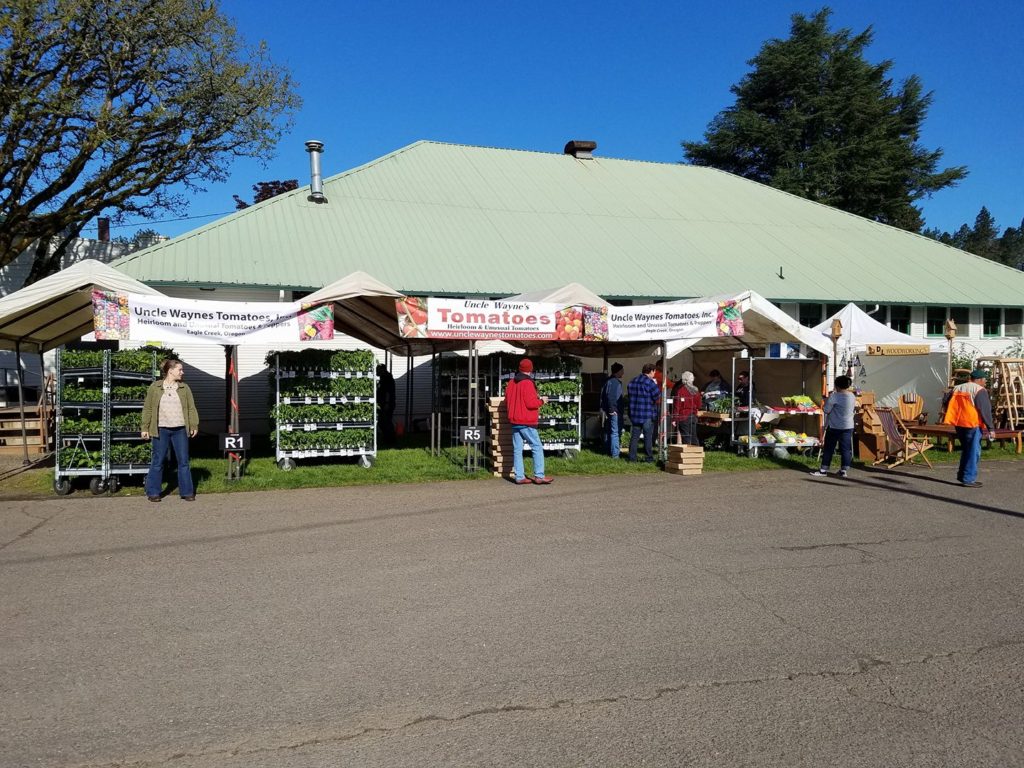
Our first market was the Farmers Market in Canby, Oregon. Doing this for a couple of years allowed us to expand our customer base and sell more plants.
As part of the Master Gardner program, new trainees were to give voluntary time to the MG program. The Clackamas County chapter sponsored perhaps the largest garden sale each year called the Spring Garden Fair. Looking over the volunteer sign-up sheets Carl observed a lack of volunteers for the kitchen cooking and selling hot dogs. So that is where he served for several years.
From the kitchen window Carl could see the hundreds of people going from booth to booth buying plants of all kinds. Carl learned that a 10’ x 10’ booth only cost about double what space at the farmers market did and gave exposure to several thousand people in two days. Comparing that to the 300-to 400 people a week at the Farmers Market made becoming a Spring Garden Fair vendor seemed like a no-brainer.
The Vision
Carl’s first business cards carried the line “Heirloom and Unusual” which expressed his desire of offer local gardeners tomato plants that they could not find at any of the “Big Box” stores. Along with good plants, Carl also wanted to provide his customers with good, accurate and understandable information to improve the chances for their garden success.
Growing
Sales greatly increased by joining the Spring Garden Fair. Besides more varieties (nearly 50) now, Carl found wholesale suppliers for the soil amendments tomatoes needed (Bone Meal, Lime & fertilizer) and wonderful square, folding cages. This expansion forced us to rent two booths each year.
Then Carl met Geoff, a young man interested in heirloom tomatoes and peppers. Geoff decided he could get all the tomato varieties he wanted from Carl so he focused on starting pepper plants. Wanting to expand his pepper business, Carl offered him some space in the larger booth at the fair. This proved good for both parties, but in a few short years the double booth was becoming very crowded.
Move to the Farm
UWT was operated out of a 20’x40’ greenhouse behind our home on a 1000 sq. ft. lot in Milwaukie, OR. Blessed with a vacant field behind us, the location had been ideal. However, our plant sales were pushing the limited greenhouse space and then the field was surveyed for development. Kay, more than Carl, felt it was time to find the country property we had always dreamed of. Now, before we got old.
With the aid of a good realtor the house was fixed up, listed and sold on the first day for above asking price. But the new country property was yet to be found. We had looked at several places we were shown, made an offer on one that the seller rejected. Once again, Kay came to the rescue. She had earned her real estate license, but found the business not what she had expected, so was no longer an active agent. But she knew how to search for properties on our home computer. And she found an interesting property in Eagle Creek.
Kay and Andrea did a drive by and Kay wanted me to see it also. What we saw was fairly nice manufactured home on 4.7 acres. But the land was mostly overgrown with brush and berry vines. After getting our agent to show us the property we made an offer. It took several offers and counter offers but we reached a deal. Then three times the deal reached what appeared to be a dead end. But the road blocks cleared one by one and we moved early in 2005 from a home with a double garage, attic storage and a greenhouse to property with no garage or attic storage and no greenhouse.
Carl hastily built a 10’x20’ temporary greenhouse for the plants that we already started but not ready for exposure to the open weather. We rented a storage pod and with the help of family and friends everything got moved to our new location. It was a hard year, but we survived.
Before next spring we had a barn built and a permanent 20’x96’ greenhouse so we could operate both our family and the business with some feeling of orderliness.
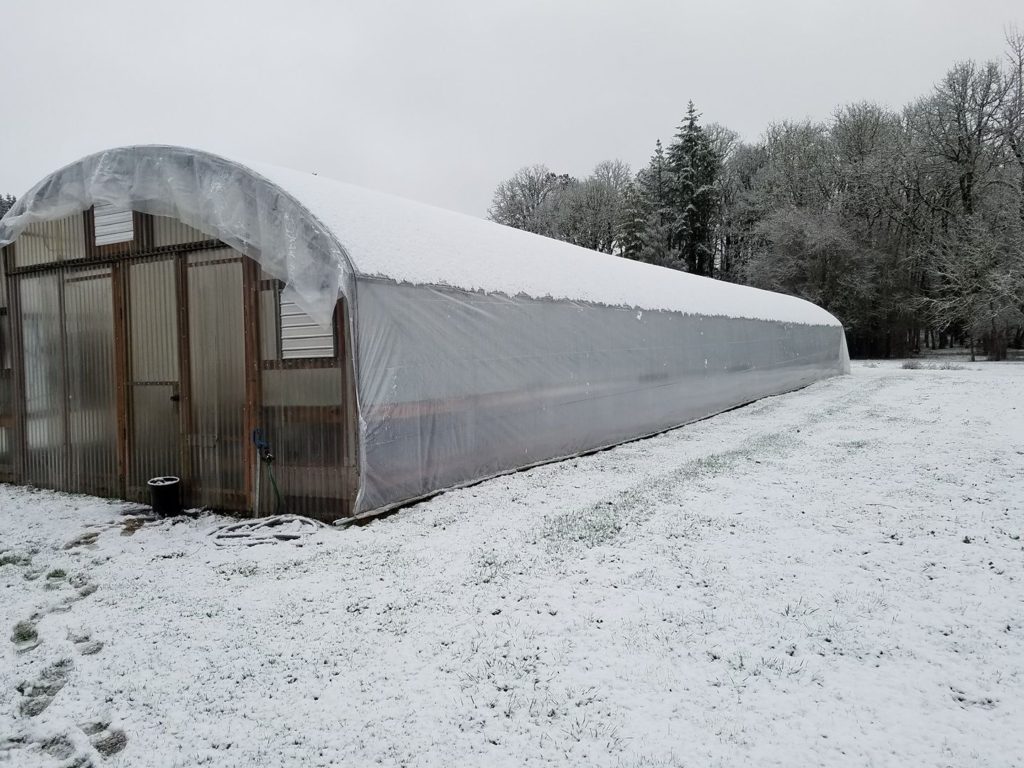
Bigger, Better Booth
At the end of the 2009 sale, Carl decided to expand again. Hoping to get the two booths next to his present location, he submitted his request for double the space. Much to his surprise, the Master Gardner in charge of allocating vendor space called and asked if he would consider moving to another location. At first Carl only thought that moving a business location might lose customers. Fortunately his wife, Kay heard the call and realized where the new location being offered was. So she insisted that Carl drive down to the fair grounds so she could point it out
The new space was the most visible, most easily accessible space in the entire fair! Carl never dreamed of getting a space like that because he could not imagine any vendor giving up such a premium location. Unknown to Carl was the fact that the vendor who had that space decided to retire that year. If the request for more space would have been made a year before this space would not have been vacant. And if the request had been made a year later it would have been given to another vendor.
Incorporation
Nearing retirement and concerned about the liability of the business both at markets and from customers visiting the farm, it was decided to incorporate the business. It was decided that Carl would be the majority owner. Kay and Andrea would be minority owners.
Strange, but Oregon rules for corporate names did not allow for an apostrophe, so the corporate name became “Uncle Waynes Tomatoes, Inc.” (Instead of “Uncle Wayne’s”)
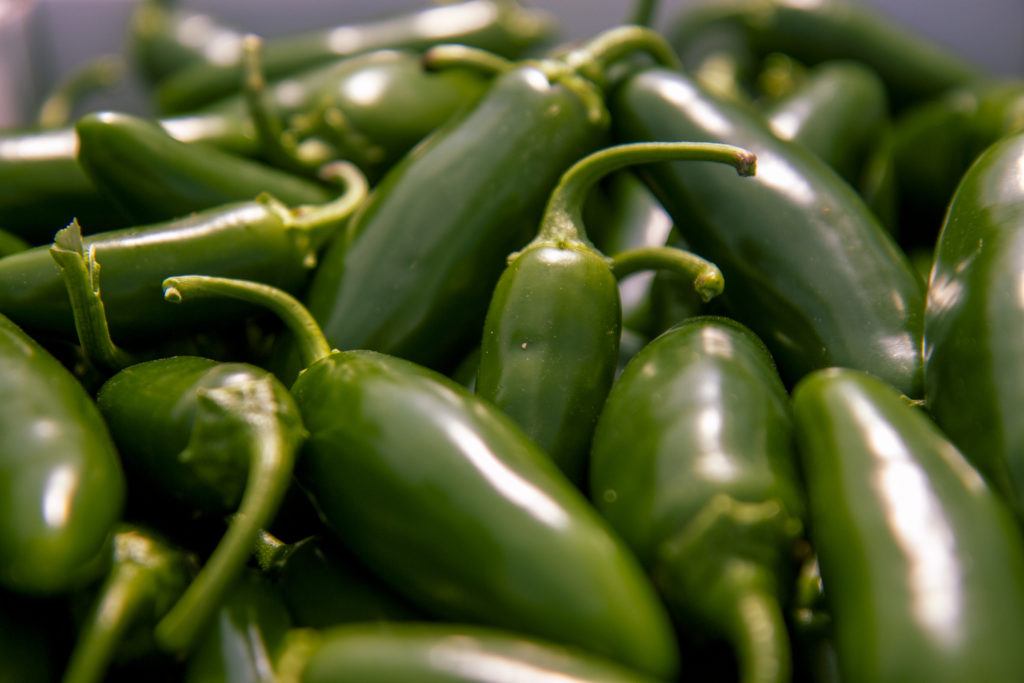
Tomatoes and Peppers
Then Carl got a surprise call from Geoff just before seed ordering time in 2014. Geoff had decided to stop selling pepper plants. Feeling certain that many customers would be disappointed if our booth did not have peppers, Carl bought Geoff’s pepper business.
For the first couple of years Carl struggled to understand peppers – how to rate the heat of the hot varieties, how to pronounce many of the names, where to find seed sources (many of Geoff’s varieties were rare and hard to find.) and how to get the seeds to germinate. Peppers seeds are much harder to germinate than tomato seeds are.
Geoff provided a great deal of help at the start. Then we were blest with two part-time employees. First Mishawana and then Heather. Both had a talent that neither Carl, Kay or Andrea had – they cooked with, ate and liked hot peppers!
The Present
In 2017 Uncle Waynes Tomatoes, Inc. sold nearly 12,000 plants at three different markets and here at the farm. Our 2017 plant list included about 350 tomato varieties, about 150 pepper varieties from sweet bells to the world’s hottest (Carolina Reaper), several varieties of cucumbers, egg plant, and a few herbs.
To provide an environment warm enough for good pepper germination, a propane heater has been added to our first greenhouse. In the spring of 2015 a second greenhouse, 30’x96’, was constructed. Amazingly it was at near capacity with tomato plants in 2016.
